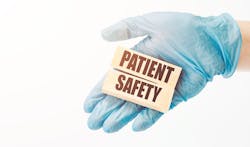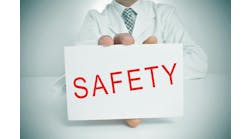When a patient gets admitted to the hospital, the last thing he or she should worry about is getting sicker due to a hospital-acquired infection (HAI). Yet, unfortunately, that standard is often not met; each year in the U.S., about one in 25 U.S. hospital patients is diagnosed with at least one infection related to hospital care alone, per CDC data. And across the globe, as many as four in 10 patients are harmed in primary and outpatient healthcare, with up to 80 percent of that harm deemed preventable, according to the World Health Organization.
HAIs can be quite dangerous to patients as the conditions they entered the hospital with may have left them with compromised immune systems. Further, HAI detection can become difficult as symptoms often present that are similar to other common ailments. As such, hospital and health system leaders are leveraging artificial intelligence (AI) and predictive analytics to find new opportunities to improve patient safety and outcomes.
At Novant Health, a four-state integrated delivery network, enterprise leaders are committed to building a systemwide safety infrastructure, with the support of both processes and technology, across its hospitals and its network of ambulatory surgery centers (ASCs). Novant started the journey by bringing in patient safety technology at its North Carolina-based Matthews Medical Center in 2018, specifically by partnering with healthcare technology company SwipeSense to utilize its electronic hand hygiene monitoring platform. Studies show that on average, healthcare providers clean their hands less than half of the times they should.
In addition to hand hygiene compliance metrics, the SwipeSense technology has the potential to help with contact tracing through real-time employee badge data, which can automatically track employee-patient, and employee-employee contacts. SwipeSense allows leaders to generate exposure reports that identify at-risk staff, patients, and medical equipment that might have been in contact with an individual infected with COVID-19 or other infectious disease, officials have stated, noting that a recent expansion of the Novant-SwipeSense partnership includes deployment at nine additional hospitals and 10 outpatient ambulatory surgery centers across North Carolina.
“At Novant Health, we are committed to leveraging advanced technologies that allow us to provide the best and safest care for our patients,” Eric Eskioglu, M.D., executive vice president and chief medical officer, Novant Health, said in a statement. “For every patient we prevent a hospital acquired infection is a human being with a name, a story, and a family with fears and hopes – someone who deserves our utmost care, attention and meticulous safety practices. Our expanded partnership with SwipeSense will help us in our relentless pursuit of zero hospital acquired infections and serious safety events.”
Related to hand hygiene specifically, Vince Panozzo, vice president at SwipeSense, notes that the company’s technology sits in the background as an “always-on solution,” and is constantly collecting hand hygiene data without a physician or nurse having to do anything different. The employee simply put his or hands underneath a soap and alcohol dispenser, and the system is capturing information without that person having to take some different type of action, he explains.
In a recent interview with Healthcare Innovation, Eskioglu discusses the importance of leveraging AI and analytics to promote a positive culture of safety, the key results generated from efforts such as automate hand hygiene monitoring, and how the organization will continue to improve in the future, with the ambitious goal of zero serious safety events. Below are excerpts of that discussion.
At a high level, can you describe Novant’s motivation to leverage data and analytics to reduce the rate of hospital-acquired infections and serious safety events in the organization?
Our medical knowledge is doubling every 72 days; 50 years ago, it was doubling every 30 years, and now it's every 72 days. In the next couple of years it is expected to double every 30 days. There is no way any human—I don't care how smart of a physician you are— is going to be able to keep up with that. So just like in your car, you have a lot of ambient intelligence that guides you what to do. You depend on it, but you're still on the driver's seat and you are still making the decision.
We want to give the physicians that kind of an opportunity, allowing them to still be in the driver's seat, but at the same time use all this data and analytics to eliminate the routine, mundane work that does cause a lot of issues, and to reduce variation. We still have huge variation in the healthcare industry, and it’s so wide that we need to narrow it down so that it’s individualized to each patient, but not have it so wide that it causes serious safety events or hospital-acquired infections. We’re trying to create the perfect sunny day; we always hear about the perfect storm, but we're trying to create a perfect sunny day with increased safety and quality and decreased clinical variation, which is going to equal to lesser costs for healthcare and more access to people.
One of the reasons we teamed up with SwipeSense, even before the pandemic, was [related to] hand hygiene, which is manually observed in many hospitals right now. So you have somebody observing a team and reporting back, and you can [imagine] the amount of variation that might take place. I don't know if anybody's counting how many seconds they're washing, and, of course, with the pandemic and social distancing, hand hygiene became very difficult to monitor in person.
So luckily, we were already transitioning away from [manual] hand hygiene tracking when the pandemic hit. We've accelerated it; all our acute care facilities will be on [SwipeSense’s hand hygiene platform] by the end of the year. This improves the process by tracking [individuals] electronically, while giving immediate insights that allow you to compare across the entire system. It also takes away the burden from somebody else manually observing a teammate so they can really focus on patient care.
How is the SwipeSense technology specifically working at Novant?
Poor hand hygiene results in more than 1.7 million hospital-acquired infections in a year, and of those infections, about 100,000 people die just because that simple, age-old technique of washing your hands has not been complied with. The easiest thing we can do is make sure everybody washes their hands properly. This technology actually is able to tell us if somebody is washing their hands properly, and how long they're washing for. You can track every individual person and give them feedback. This takes away from ‘he said, she said.’ It makes the process very foolproof by being able to [verify] that someone didn't wash their hands more than twice today, for example. This allows us to pinpoint each team member and give them individualized feedback without getting pushback or without making them feel like we're judging them, because it's not judgment. It's just giving them the scientific observation.
This technology also allows us to track assets—the equipment that moves around between patients’ rooms, depending on their needs. U.S. healthcare data shows that on average, we lose about $4,000 worth of equipment per patient. We always talk about healthcare being so expensive and not affordable to some segments of the population, but it's not because we're giving bad healthcare—it's because we have a lot of inefficiencies and redundancies that we need to eliminate. And this is one of them.
We also can track how many times anyone [wearing a SwipeSense badge], such as a nurse, has gone into a room, which gives us information on when a patient might be a candidate for a fall event. If nobody has been into the room for three hours or more, we know that the risk of fall goes up by 50 percent. If nobody has been in a patient's room for three hours, especially if they're at high risk for a fall, we're looking to alert the nurse that it might be time to check up on the patient. This is [the value of] ambient intelligence—it’s is not really about the patient's own data, but the data surrounding the patient.
What have been the most important outcomes/results generated from these efforts?
The biggest thing we have seen, especially in the hospitals, is a 50 to 60 percent drop in hospital-acquired infections. We're aiming to be just as safe as the aerospace industry. When I was growing up, I remember hearing about plane crashes, but you don't hear about them as much anymore. If you do, it's due to a lapse in some serious safety event issue, like with the Boeing 737 Max. Our goal is to get to zero serious safety events. We don't want anybody to come to our hospital and die because of what we did. They come to our hospitals to get better, not for us to make them worse.
When you think about the airline industry, every day, the amount of serious safety events and the number of hospital-acquired infections causing patients to die is equal to two full plane loads of people crashing every day in this country. If two planes crashed every day, how many people would fly? Nobody would fly. Unfortunately, we've accepted this for some reason. Literally, two full plane loads of people die every day from medical mistakes. I want to eliminate this from our system entirely.
So how will you continue to measure progress and improvement?
You may say it's a lofty goal. But I'll remind you, we went from having an 80 percent reduction in serious safety events from 2014 to 2017. We made another goal this past year, and this was before the pandemic, to reduce serious safety events by another 20 percent on top of the 80 percent we reduced them in that three-year time frame. We [exceeded] that goal; during the pandemic, we were able to drive down our serious safety events by another 41 percent. But does that make me happy? No, because we still have patients that have serious safety events, even if that number is one of the lowest rates in the country. Nine of our hospitals received an ‘A’ Grade in the Leapfrog Group’s Spring 2020 Hospital Safety Report. But we're not satisfied. My goal is to have nobody injured because the reason why they came to the hospital in the first place is to get rid of their illness.
What was required from a cultural/behavior change perspective to get physicians on board with becoming more data-driven?
We actually let our physicians define the clinical problems. The hand hygiene [issue] came to me from my infection prevention [team] who told me they didn’t think the manual process was good enough. So the physicians have defined the questions, and when we think it’s a good clinical question, we pair him up with our data scientists at Novant Health. It’s very important for healthcare systems to understand that unless you have that synergy with your technology counterpart, this will not work. You have to have the physician champions.
People ask me if AI is going to replace physicians. But going back to the driver example, you're still going to be in the driver's seat and you're still going to have the wheel in your hands. I say that physicians who use AI are going to replace physicians who refuse AI. AI will not replace physicians, but those who use AI are going to be so much more effective in predicting what the patient outcomes are going to be and in preventing major diseases before they even happen. That’s going to really put out of business the physicians who refuse AI and refuse to embrace it in their daily practice.


